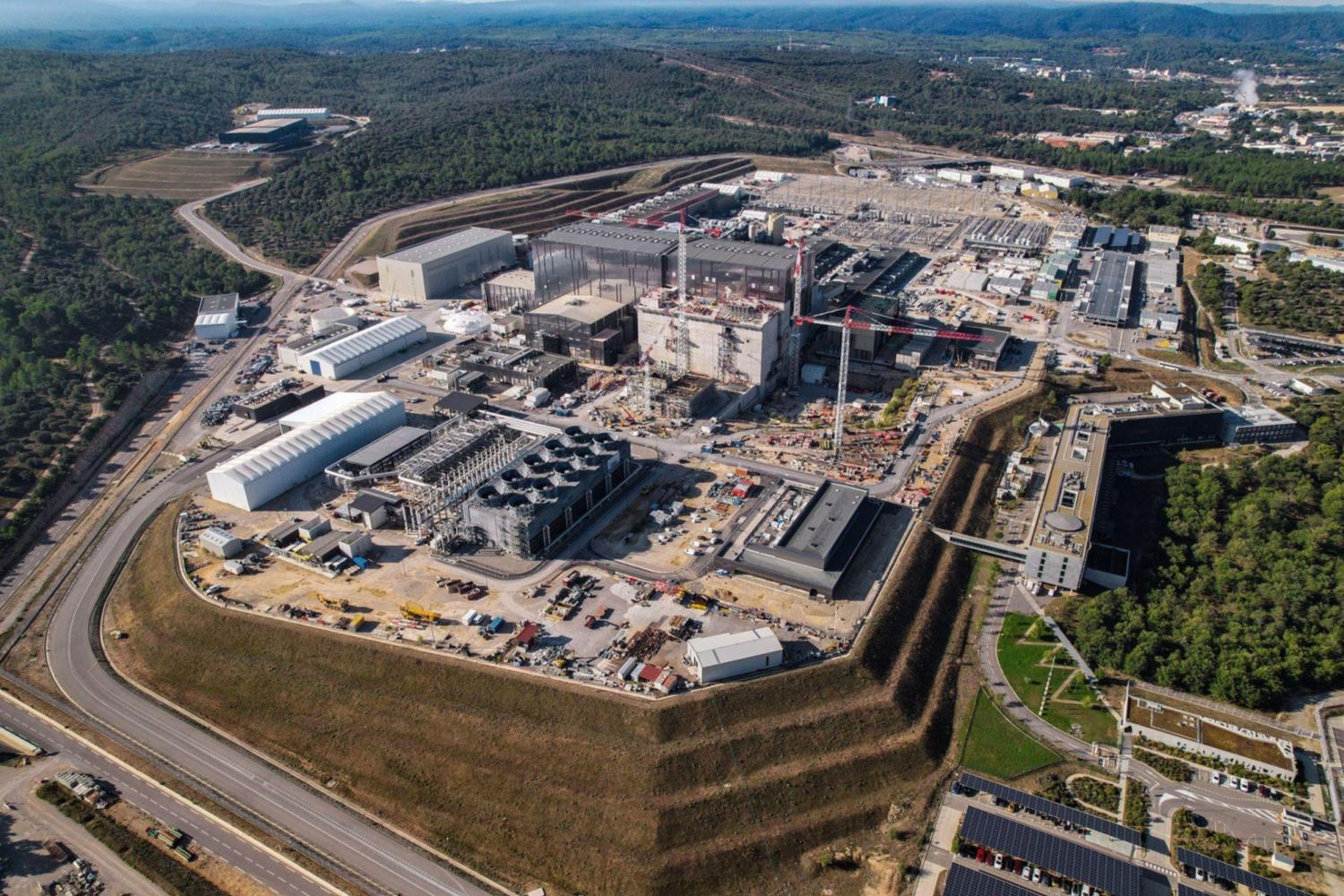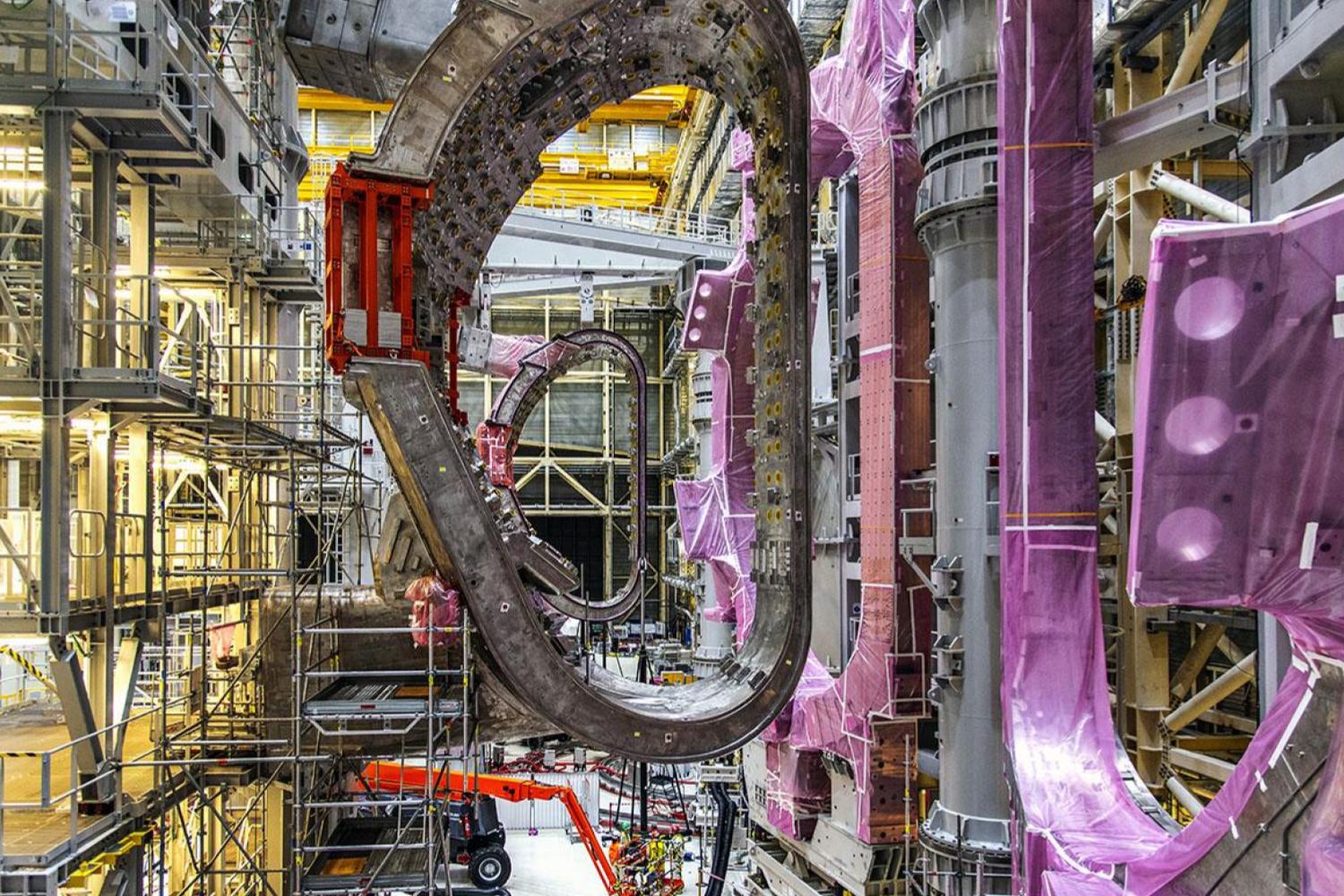Faber ITER, the giant international nuclear fusion reactor project under construction in southern France, has just reached an important milestone: 19 huge toroidal coils, which will now be able to install the essential plasma for the reaction.
But another message, much less encouraging, came at the same time; the dire deadlines of the first plasma will undoubtedly be officially postponed for several years.
A technical and regulatory crossroads
At the very beginning of the program, in the 2016 roadmap, the consortium leading the construction had set a tentative date of 2025. But for some years now it has been clear that this purpose has already been removed. In fact, the purpose is offensive with many technical and regulatory obstacles.
The unprecedented complexity of this extraordinary machine now represented a major challenge. but he also had to throw away the engineers many rebellious elements that did not make their task any easierThere are, for example, serious manufacturing problems with some parts and the covid-19 pandemic, which has completely disrupted certain logistics chains.

Yes, to obey the strictest requirements of the Nuclear Safety Authority (ASN)The French regulator is monitoring the site very closely. In January 2022, the organization expressed doubts about the prototype’s ability to effectively protect workers from the high-energy radiation generated by the fusion reaction. The consortium therefore had to make substantial modifications to the design, particularly by adding a new layer of protection around the pin. But, in addition to the additional workload, these changes proved problematic on other levels. For example, the added mass of the new shield demonstrated the structural integrity of the concrete base on which the reactor rests.
In addition, ASN returned to the charge a little later, this time demanding guarantees that the reactor chamber contained no pine. Yes, according to the magazine Science The institute’s experts considered that the tokamak walls produced by the South Korean manufacturer did not meet the exacting standards expected. From the same source, ITER operators believed that they could compensate for these approximate tolerances in modification welds, but ASN did not see it that way. This conflicting relationship with the French director therefore continues to burden the program.
He knocks on the door on purpose
All these delays are more worrying in the present context. Not only because they generate growth in the cost of the already stratospheric project (more than 20 billion of public money at the time of writing), but also and especially because the tension is pressing more and more.

ITER was never the only experimental fusion reactor project. But the lead loaned a few years ago (at least on paper) melted like snow in the sun. Meanwhile, many private companies are very ambitious Helion or * He needs a general to name a few, broke out. And many of them are promising nowenergy for net production before ITER emerges from its torpor, with less expenditure, what more.
These predictions are certainly very ambitious and not necessarily realistic. But in any case, the consortium will work extra hard to defend the relevance of this pharaonic project.
A whole new roadmap
THE JOURNEY a new roadmapwhich was presented by press conference on July 3. He will now be valued by men of rank. If approved, which seems highly unlikely, major changes will be undertaken.
The first is that it is terrible The date of the first plasma rejection would be 2034. The delay is certainly predictable, but far from ideal, as private players move faster and faster.
In order to stay in the race, the ITER staff therefore gained access far in advance. He has will arrive at the first plasma with a fuller and more efficient engine which, I hope, will make this delay more tolerable than in the previous journey.

To provide context, the old baseline » The first plasma was quite modest. The idea was simply to produce the shortest possible energy with a low proof” relatively little scientific value “. A simple proof of concept, in short. It would have been necessary, therefore, to reach through four additional stages of construction to “ plein plasma by 2033
The new program, on the other hand, plans to move to a concrete period sooner after the commission. Actually, the first plasma won’t come until 2034 at the earliest. But all planned modifications must make it so that it continues directly with “ 27 months of substantial research » To the heart of the matter during 2036
By moving forward step by step in this way, the engineers hope to be able to build on the good foundations… and above all to show faith in ASN, which of course will have to give the green light before it is launched in the long term. fusion proceeded.
Does ITER still have a future?
But even if everything goes according to plan, this does not mean that the tokamak will mature any faster. The new program still offers a step-by-step ramp. It will still be some time before operations can be launched with deuterium-tritium (or DT, a pair of hydrogen isotopes that should serve as support for commercial fusion reactions). Once commissioned, the reactor will only heat conventional hydrogen, then pure deuterium, before transitioning to DT operations around 2039.
The whole question now is whether the game still works in a context where the risk of ITER being overtaken by another development has never been so high. Troy Carter, a nuclear fusion researcher approached by Science recognizes that this is a legitimate concern. He expects to call some pledges as part of the budget to be realized in private projects that promise to achieve the goal faster. Fortunately, many seem to be experts He is convinced that the Cadarache reactor still has its place – although this undoubtedly involves reconsider its position as a pioneer and put ITER at the service of the industry.

” ITER plasma will give us a very diagnostic that we can use to make these commercial machines easier to operate. It will be a useful platform on many levels. “, Carter estimated.
The ITER management, for its part, seems to share this interpretation. “ Fusion has long been a science where international cooperation is the norm. And what we have achieved with this public money, I think should be returned to the private sector “, a he declared Pietro Barabaschi, Director General of ITER, in an interview.
Some will consider this a pragmatic decision for the future of a complex and ambitious project that promises to completely transform our humanity. Others will doubtless see it as a mean-spirited admission of failure to legitimately defend an enormously expensive and potentially obsolete project. at the present time it is still not possible to decide between the two camps. All that remains is to wait until the next ITER council, on July 19 and 20, to see if this new policy is really strengthened – and if so, in what way this type of fusion will be affected by the huge stakes.
